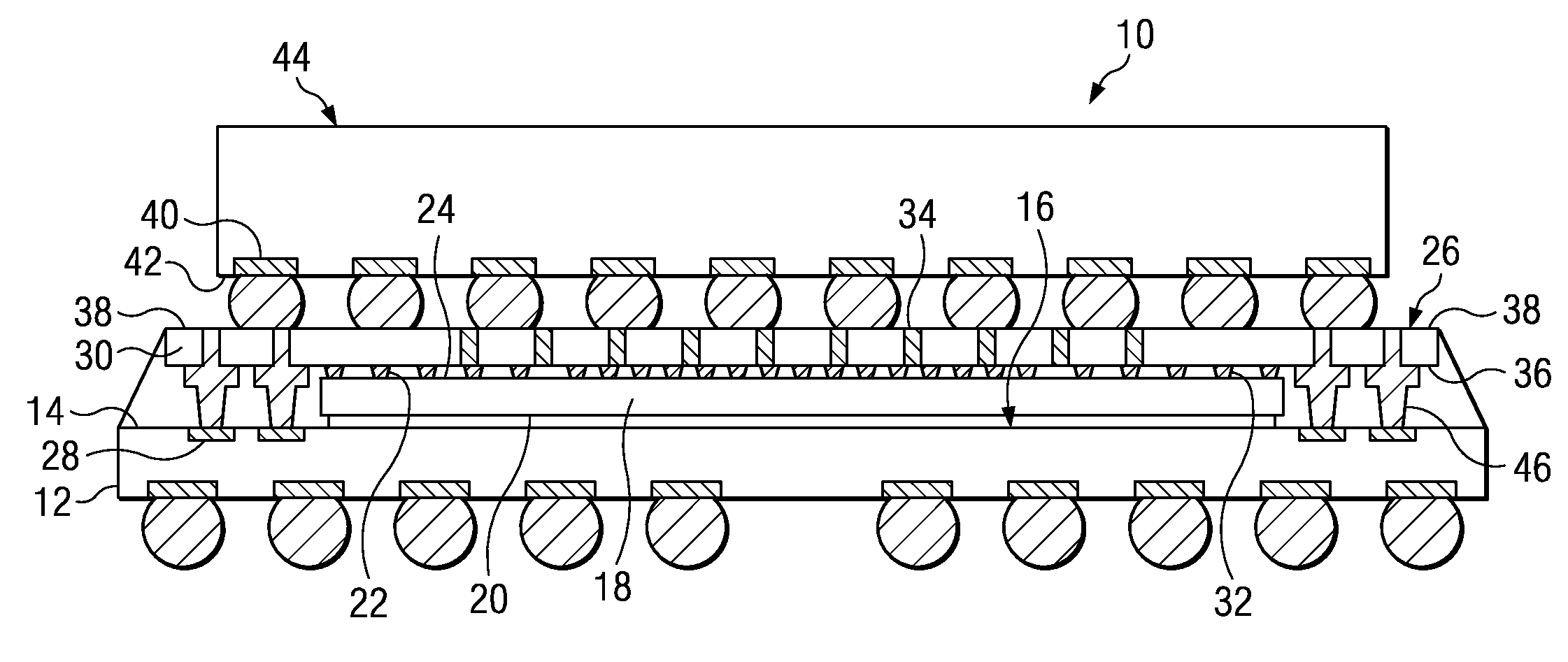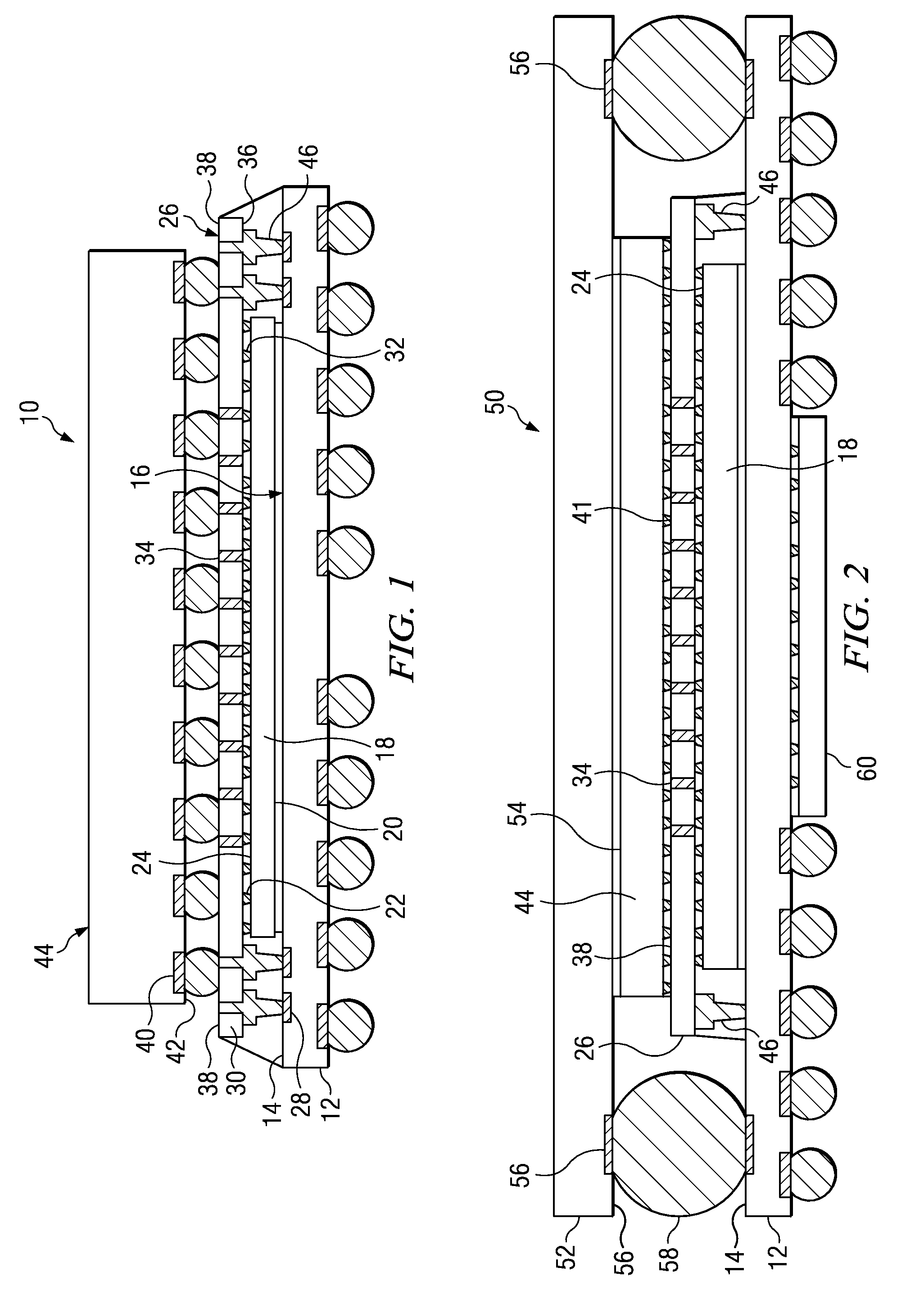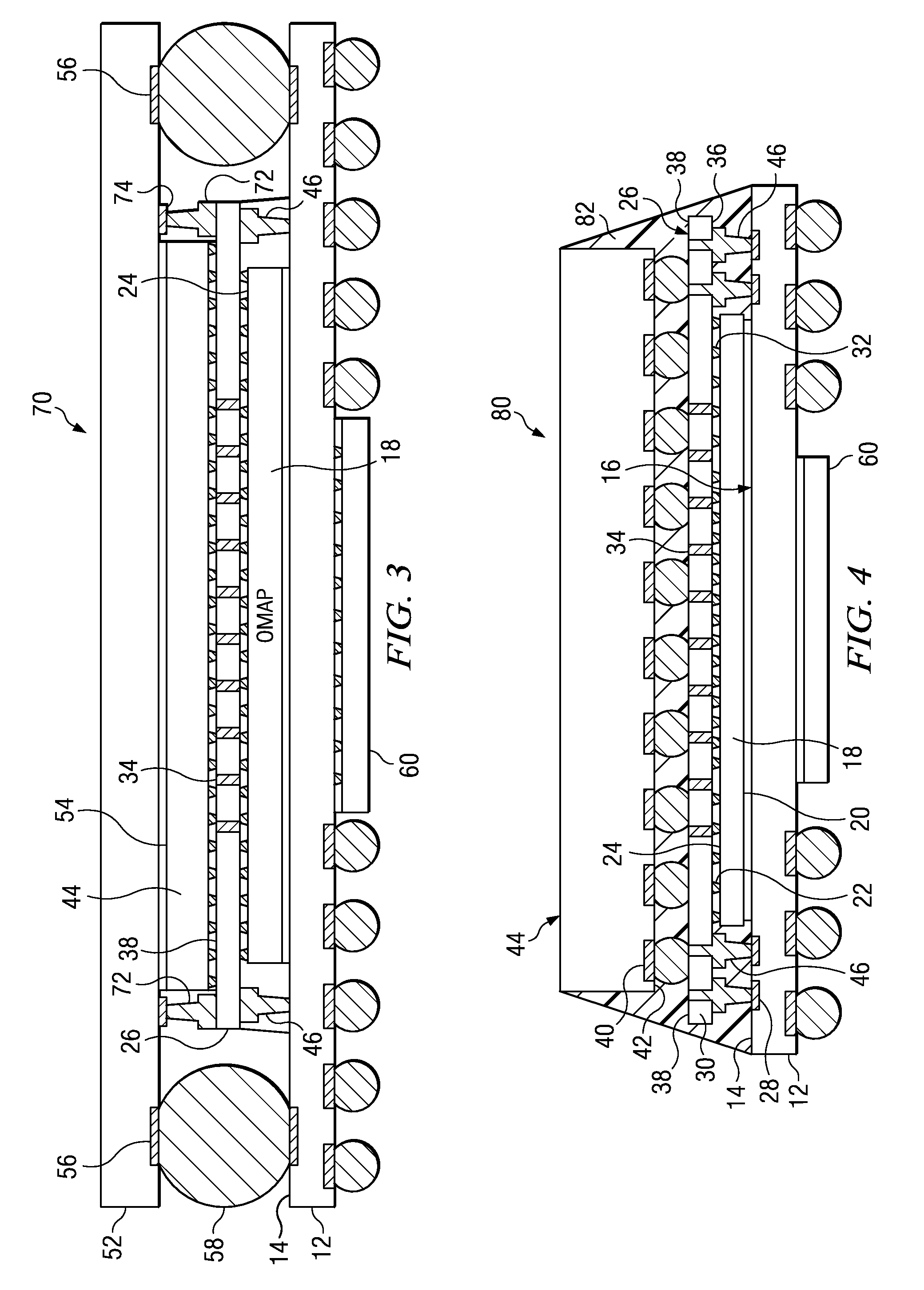Package on Package Structure with thin film Interposing Layer
a technology of interposing layer and package structure, which is applied in the direction of semiconductor devices, semiconductor/solid-state device details, electrical devices, etc., can solve the problems of reducing the footprint of each, the current state of the art, and the inability to increase density while reducing area, so as to reduce the footprint of each package and reduce the thickness of the interposing layer, the effect of increasing versatility in assembly component selection
- Summary
- Abstract
- Description
- Claims
- Application Information
AI Technical Summary
Benefits of technology
Problems solved by technology
Method used
Image
Examples
Embodiment Construction
[0020]While the making and using of various exemplary embodiments of the invention are discussed herein, it should be appreciated that the present invention provides inventive concepts which can be embodied in a wide variety of specific contexts. It should be understood that the invention may be practiced with vertically stacked semiconductor package on package assemblies and associated manufacturing processes of various types and materials without altering the principles of the invention. For purposes of clarity, detailed descriptions of functions and systems familiar to those skilled in the semiconductor device, packaging, and manufacturing arts are not included.
[0021]In general, the invention provides vertically stacked semiconductor device assemblies using thin film or tape interposing layers structured for vertically coupling layers of the stack. Features of the invention are advantageous in terms of increased electrical connection density, decreased assembly footprint, decreas...
PUM
 Login to View More
Login to View More Abstract
Description
Claims
Application Information
 Login to View More
Login to View More - R&D
- Intellectual Property
- Life Sciences
- Materials
- Tech Scout
- Unparalleled Data Quality
- Higher Quality Content
- 60% Fewer Hallucinations
Browse by: Latest US Patents, China's latest patents, Technical Efficacy Thesaurus, Application Domain, Technology Topic, Popular Technical Reports.
© 2025 PatSnap. All rights reserved.Legal|Privacy policy|Modern Slavery Act Transparency Statement|Sitemap|About US| Contact US: help@patsnap.com



